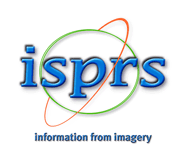Accuracy estimation of 3D model creation using ToF cameras integrated into smartphones
Keywords: Time-of-Flight (ToF) camera, smartphone, camera calibration, spatial test object, camera internal orientation elements, 3D modeling accuracy
Abstract. This work investigates the accuracy of determining object point coordinates from images acquired with a Time-of-Flight (ToF) camera integrated into an iPhone 15 Pro smartphone. Calibration of such a camera consist of two parts: direction calibration and distance calibration. For classical direction calibration (determining the interior orientation parameters), we propose a spatial test object consisting of a plane-parallel plate with known dimensions that can move perpendicularly to its surface. A universal photogrammetric device (SPR—Romanovski stereo projector) was used for this. The plate movements were recorded using the meter with an accuracy of 0.1mm. At the same time, the camera is stationary and a series of images is taken with uniform elements of external orientation. Therefore, they can be considered a single image. This is how a spatial test object is formed. For distance calibration, we propose determine the scale factor of the model built from pixel-coordinate measurements and corresponding distances. Our results demonstrate that classical ToF camera calibration, which corrects point directions by accounting for lens distortion, does not improve pointcoordinate accuracy in ToF-derived models. Model accuracy significantly improves when applying the scale factor determined from control points or known distances on the object.





